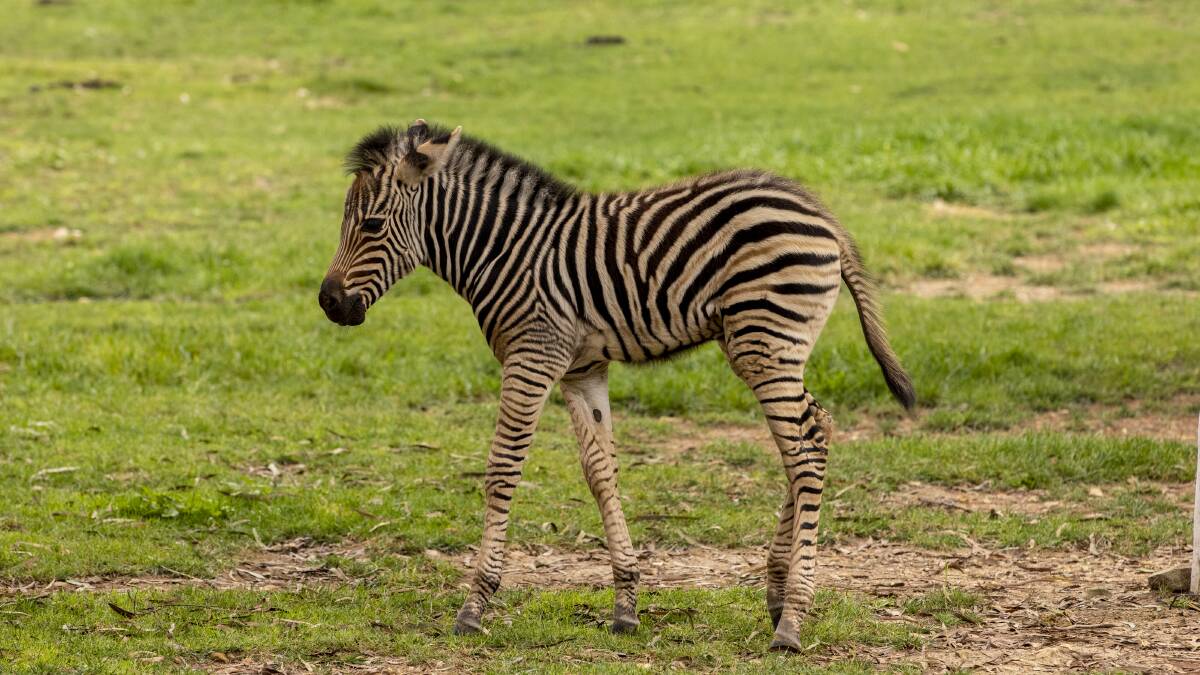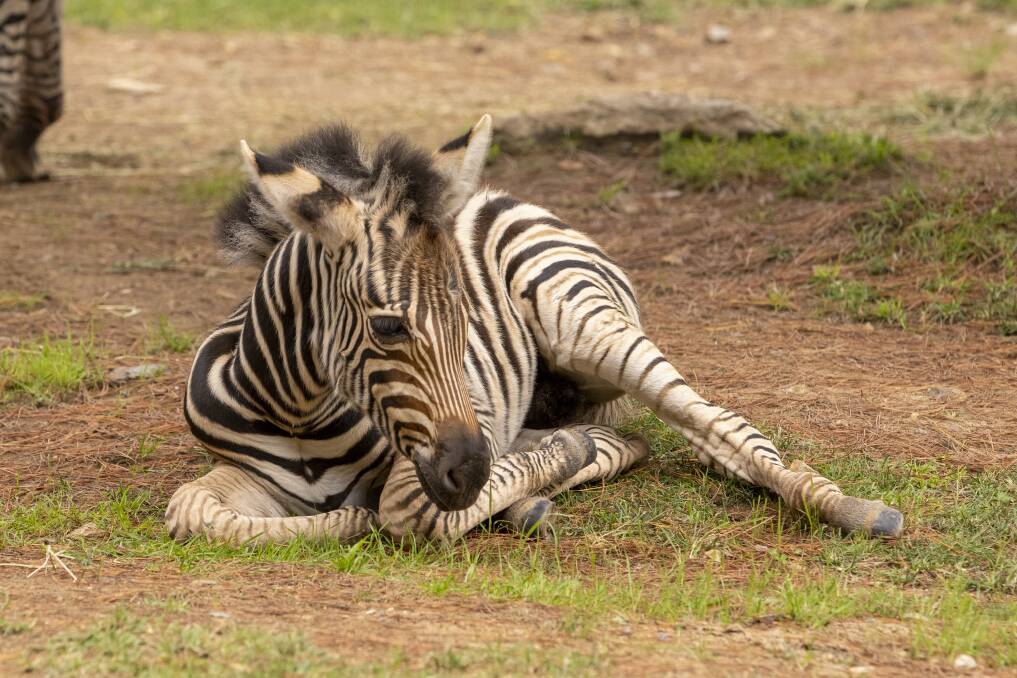
It's not uncommon for a one-week-old baby to be received by lots of visitors who are eager for a glance.
Subscribe now for unlimited access.
$0/
(min cost $0)
or signup to continue reading
But unlike most babies, this newborn won't be picked up and cuddled by the influx of guests.
Instead, he will be admired from viewing platforms metres away, all while chewing on grass.
The National Zoo has welcomed the arrival of a newborn male zebra calf, born onsite on March 30.
The one-week-old foal has yet to be named, but has already become the centre of attention at the zoo's zebra enclosure.
A name is expected to be chosen for the newborn in coming weeks.
IN OTHER NEWS:
While he isn't the first zebra to be born in captivity at the zoo, the foal is the first for mother Johari.
Senior wildlife keeper at the zoo Katie Ness said mothers were often very protective of newborns in the days following birth, but that the young foal had settled in well with the other zebras.

"It often depends on the herd, but usually for the first few days it's just mum and foal and she won't let the herd interact with the baby," Ms Ness said.
"But after a while, they do let others interact. Johari was quite protective at first but she has become more relaxed."
The average gestation period for a zebra is about 12 to 13 months, and mothers usually give birth to just one foal.

Other zebra foals born in Canberra in recent years have been moved to different zoos around the region.
Ms Ness said it was quite common for there to be a new zebra foal born each year.
"The gestation period is around 13 months or so, and pretty much after that, the female is mated within a week of giving birth, so they're pregnant almost right away," she said.
The young zebra is not the only new addition at the zoo; four African painted dogs arrived from the Perth Zoo.
The four dogs include father Hasani and his three two-year-old sons Saka, Akita and Araka.

The recently arrived dogs will be kept at the zoo as a bachelor group and won't be used as part of a breeding program, replacing a previous group of six painted dogs that had died from old age.
The arrival coincides with the addition of a new viewing platform that has been built around the enclosure to view the animals.
Ms Ness said the painted dogs were most commonly found in southern Africa around Tanzania and Mozambique and could reach speeds of up to 70km/h.
"They are very complex animals. They don't have their own territory [at the zoo] but they do have a different hierarchy and it can change at different times of the year," she said.
"They can be very sweet and take care of each other and their young but they can be brutal as well and fight."

Our journalists work hard to provide local, up-to-date news to the community. This is how you can continue to access our trusted content:
- Bookmark canberratimes.com.au
- Download our app
- Make sure you are signed up for our breaking and regular headlines newsletters
- Follow us on Twitter
- Follow us on Instagram


